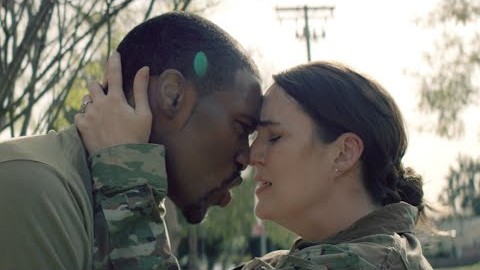
After years spent fine-tuning their creation, the creators of Darkest Dungeon have unravelled it. Now in early access on the Epic store, the sequel to Redhook Studio’s grim, turn-based Roguelike cuts the tight loop of dungeon diving and party maintenance and stretches it out flat. Roguelike progression and random outcomes remain, but now every excursion into this grim world is a complete journey with a decisive end, one way or another.
Studio co-founders, Tyler Sigman and Chris Bourassa, have stripped out the original game’s static base of operations, the Hamlet, along with its dank, claustrophobic dungeons. In their place is a stagecoach tour of the apocalypse, a road trip through burning towns and rotten farmland stalked by deranged cultists. “In Lovecraftian terms, this is ‘At the Mountains of Madness’, not ‘Rats in the Walls’,” explains Sigman, the game’s design director.
In my experience with the game so far, it’s an appropriate comparison. Darkest Dungeon 2 feels familiar yet uncanny, like Lovecraft’s works it aims to evoke the terror of the unknown from within the expected. This is a sequel that’s supposed to stand next to the original rather than replace it.
Yet even at this stage it also feels like a much grander endeavour. “We wanted to escalate the stakes, and explore a world beyond the confines of the Hamlet,” creative director Bourassa tells me. “Technically speaking, the regions are dungeons, but it’s been fun implying a scale of destruction that we couldn’t in Darkest Dungeon.”

“The Hamlet was great and was crucial to the structure of [the first game],” adds Sigman, “but it seemed lacklustre to follow it up with… another hamlet or city or fortress or camp of some kind. Freeing things up from a single base allowed us to lean into the journey aspect.” Another source of inspiration Sigman mentions here is The Oregon Trail, the classic early computer game known for cruel twists of fate. With Darkest Dungeon’s signature emphasis on coping when plans go horribly awry, it’s a marriage that makes perfect sense.
The change of direction creates a more epic narrative feel to each journey. This time, each of the four characters you select to form a party isn’t merely a representative of a class but a person with a backstory that reveals itself gradually as you visit certain locations. The fate of humanity now rests not on an endless churn of heroes but on this bunch of traumatised individuals. And there’s something about their last-ditch mission to keep hope alive in a world collapsing into ruin that seems to carry a grim relevance in today’s reality.
It also adds to the atmosphere of dread that everything looks doubly horrific, thanks to a 3D graphical overhaul. As soon as you reach the game’s first inn (a bit like campfires, where you can rest, repair and resupply), you can’t help but note how the gothic comic book sketches in the first game have come to life. The poses of your seated crew convey status and mental fragility, from the manspreading exhaustion of the man-at-arms to the self-torturing despair of the highwayman.

Throughout the game these warriors appear more determined and haggard in their expressions and weighty animations, while the monsters are even more disgusting, not least some pustulous zombified livestock. “Our goal was to emulate the marketing artwork I had drawn for Darkest Dungeon,” says Bourassa, before explaining some of the steps involved. “For characters, the textures are hand-drawn directly on the models whereas for the environment assets, the models are built straight off the artwork we supply. We worked a great deal on refining the lighting and shaders, which I’d say was the biggest challenge of the whole process.” Seeing it all in action, it certainly feels like a successful transition.
As for the structure of each trip, Darkest Dungeon 2 owes something (as many recent roguelikes do) to Slay the Spire, with its narrow, twisting road split by forks that lead to different kinds of encounters. Plotting ahead is essential (although you can’t see a whole area map from the start), with certain paths more likely to lead into ambushes, and a whole range of monsters, tradespeople and resource gathering opportunities waiting at the end of each segment. You’ll also need to top up the flame of hope attached to your ride (a twist on the torches in Darkest Dungeon) as enemies grow stronger in the darkness.
With these changes, moment-to-moment progress now relies less on coin flips and dice rolls than in the first game. More choices show potential results in advance, with pros and cons on both sides. You can even elect to dodge certain battles, often at the cost of resources, while within combat there’s no percentage-based accuracy stat to potentially spike your offensive strategies. Instead, certain status effects can halve (or quarter) your chances of landing a blow, with a symbol clearly indicating when they’re in effect. None of this makes Darkest Dungeon 2 easier or less cruel than its predecessor, but the added transparency helps when planning tactical responses.

It will, however, be interesting to see how some of the new elements develop over time. I’m unsure, for example, whether the act of travelling itself can remain compelling, as you slowly steer your horses to pull the cart through piles of debris (where hidden items might be lurking) then make your decision at each junction. Along the way, your characters’ stress levels and relationship metrics shift, in part according to your route decisions. But it’s still a rather slow and partially engaging process.
Of course, addressing this kind of issue is precisely the point of the early access model that Redhook has committed to. “We sometimes say that Early Access should have around 60-70% of content at launch, and that applies to these sorts of things too,” says Sigman. “With the core in place, we can now think about really neat additions for flavour and variety.”
“We will continue to add new and interesting destinations to the map – some shared, some region-specific,” says Bourassa, although we shouldn’t expect anything that would change the game’s focus or atmosphere. “We said from the outset that we didn’t want to make a driving game,” he adds, “so there won’t be any ramps, jumps, or drifting, despite my love of Mario Kart.”

It’s a similar story with another mechanic I struggled with at the start – the workings of the ‘affinity’ system between individual characters. The relationship between any two party members can change for better or worse at almost any time, but rarely in predictable ways. Having your plague doctor heal your hellion, for example, might strengthen the bond between them, or may cause a third character to resent the healer for not patching them up instead.
And these little twists matter because in Darkest Dungeon’s epic runs – about four hours if you reach the end – affinities can become a matter of life or slow, drawn-out death. Negative vibes cause debuffs in battle and also increase characters’ stress, until one has a ‘meltdown’ that reduces their HP to almost nothing, destroying morale even further. It’s easy to fall into a self-reinforcing spiral of stress and hatred that plagues every action you take.
“The affinity system is a prime example of something that will benefit a lot from early access,” explains Sigman. “It’s much more complex than the affliction system from Darkest Dungeon, just because every ingredient involves two heroes instead of one.” There are a lot of triggering factors, he explains, and they’ve seen that players are finding some more logical than others. “People are already catching on to the fact that stressed heroes are more likely to get grouchy with their teammates,” he says, “which creates a strong incentive to keep stress down.”
Indeed, by my fifth Darkest Dungeon journey I did manage to control my team’s stress and complete a run for the first time. It’s a sign that progress can already emerge from learned experience as well as the rub of the green. Equally, it’s a pleasing result after the long grind towards the end game of Darkest Dungeon to reach an ‘ending’ so soon, even though I still have many more characters and items to unlock and experiment with in this early build.
There will, of course, be more besides. The existing version currently features just one ‘act’ out of five that will feature in the final game. “Players are working through their confessions over the course of five bosses,” Bourassa explains. “Each will have a narrative sequence, and present a different endgame challenge.” We can also expect smaller changes depending on which act we try to tackle. “The cultist enemies,” says Bourassa, “may see some changes depending on which boss a player opts to undertake.”
It’s easy to feel confident that Darkest Dungeon 2 will meet its potential. Bourassa and Sigman have been through the early access process before with Darkest Dungeon, and judging by the results we can expect real balance and refinement by the time the sequel sees its full release. And if the journey to completion is a long road with tough obstacles to overcome, then Darkest Dungeon 2 already shows that’s a thrilling way to travel.
Darkest Dungeon 2 is out in Early Access now on the Epic Games Store.
The post ‘Darkest Dungeon 2’: How Redhook Studios are reinventing their roguelike classic appeared first on NME.





